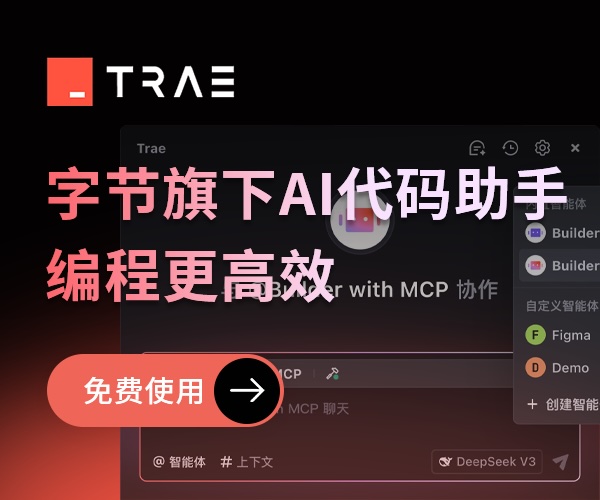ASP.NET 中的设计模式之MVC篇
ASP.NET 中的设计模式之MVC篇
- 设计模式
- MVC
- 页面控制器
- 模板与Page基类
设计模式
软件开发中,软件复用和团队协作都一直是最为人们关注的重要问题之一。有趣的是,这两个似乎属于软件工程范畴的问题都有一个共同的技术方面的解决之道:设计模式。
在这里,笔者无意对设计模式的含义进行过多介绍或者严格定义,只是给一个比较简单的理解:设计模式是对一些经常出现问题的一种解决方式,这种解决方式来自于许多开发人员的经验总结。
MVC—WEB开发中最基本的设计模式
在经典的设计模式书籍中,常用的设计模式有二三十种。就WEB应用程序开发来说,MVC可能是最基本的一种设计模式了。的确,WEB应用程序有一些特有的问题,瘦客户端、不连续的状态、对友善界面的关注,以及愈来愈多的终端设备…。
ASP.NET中的MVC
ASP.NET对MVC提供了支持。编写代码隐藏的网页时,程序代码被分为两部分:.ASPX页面文件和一个单独的类文件(.CS文件)。
在图1所示的例子中,用户从下拉框选择图书类别,提交后,列出该类别下的书籍清单。
图1 示例
视图
此例子的View部分在.ASPX文件中: <%@ Page language="c#" Codebehind="WebForm1.aspx.cs" AutoEventWireup="false" Inherits="TempSite.WebForm1" %>
<%@ Page language="c#" Codebehind="WebForm1.aspx.cs" AutoEventWireup="false" Inherits="TempSite.WebForm1" %> <HTML>
<HTML> <HEAD><title>BookView</title></HEAD>
<HEAD><title>BookView</title></HEAD> <body >
<body > <form id="Form1" method="post" runat="server">
<form id="Form1" method="post" runat="server"> <FONT face="宋体"><h4>图书浏览</h4>
<FONT face="宋体"><h4>图书浏览</h4> <asp:Label id="Label1" style="TOP: 56px"
<asp:Label id="Label1" style="TOP: 56px"  runat="server" Width="80px" Height="24px">选择类别:</asp:Label>
runat="server" Width="80px" Height="24px">选择类别:</asp:Label> </FONT>
</FONT> <asp:DropDownList id="bookClassSelect" style="TOP: 56px" runat="server" Width="192px" Height="24px"></asp:DropDownList>
<asp:DropDownList id="bookClassSelect" style="TOP: 56px" runat="server" Width="192px" Height="24px"></asp:DropDownList> <asp:Button id="Button1" style="TOP: 56px" runat="server"
<asp:Button id="Button1" style="TOP: 56px" runat="server" Width="72px" Text="确定"></asp:Button>
Width="72px" Text="确定"></asp:Button> <br> <br>
<br> <br> <asp:DataGrid id="bookDataGrid1"
<asp:DataGrid id="bookDataGrid1" HeaderStyle-BackColor="#aaaadd" BackColor="#ccccff"
HeaderStyle-BackColor="#aaaadd" BackColor="#ccccff"  style="font-size:8pt;"
style="font-size:8pt;" runat="server" Width="75%" CellPadding=3 CellSpacing=0
runat="server" Width="75%" CellPadding=3 CellSpacing=0  BorderColor="#000000"></asp:DataGrid>
BorderColor="#000000"></asp:DataGrid> </form>
</form> </body>
</body> </HTML>
</HTML>
例子程序中的Model和Controller部分则在独立的类文件中:
 using System;
using System; using System.Collections;
using System.Collections; using System.ComponentModel;
using System.ComponentModel; using System.Data;
using System.Data; using System.Data.SqlClient;
using System.Data.SqlClient; namespace TempSite{
namespace TempSite{ public class WebForm1 : System.Web.UI.Page {
public class WebForm1 : System.Web.UI.Page { protected System.Web.UI.WebControls.DropDownList bookClassSelect;
protected System.Web.UI.WebControls.DropDownList bookClassSelect; protected System.Web.UI.WebControls.Button Button1;
protected System.Web.UI.WebControls.Button Button1; protected System.Web.UI.WebControls.DataGrid bookDataGrid1;
protected System.Web.UI.WebControls.DataGrid bookDataGrid1; protected System.Web.UI.WebControls.Label Label1;
protected System.Web.UI.WebControls.Label Label1;
 private void Page_Load(object sender, System.EventArgs e)
private void Page_Load(object sender, System.EventArgs e) {
{ if(!Page.IsPostBack){
if(!Page.IsPostBack){ string strcmd="Select * From BookClass";
string strcmd="Select * From BookClass"; SqlConnection sqlCn=new SqlConnection(
SqlConnection sqlCn=new SqlConnection( "server=localhost;database=guanxi;uid=sa;pwd=pass");
"server=localhost;database=guanxi;uid=sa;pwd=pass");
 SqlDataAdapter sqlCommand=new
SqlDataAdapter sqlCommand=new SqlDataAdapter(strcmd,sqlCn);
SqlDataAdapter(strcmd,sqlCn); DataSet ds=new DataSet();
DataSet ds=new DataSet(); sqlCommand.Fill(ds,"BookClass");
sqlCommand.Fill(ds,"BookClass");
 bookClassSelect.DataSource=ds;
bookClassSelect.DataSource=ds; bookClassSelect.DataTextField="ClassName";
bookClassSelect.DataTextField="ClassName"; bookClassSelect.DataValueField="ClassID";
bookClassSelect.DataValueField="ClassID"; bookClassSelect.DataBind();}
bookClassSelect.DataBind();} }
} #region Web 窗体设计器生成的代码
#region Web 窗体设计器生成的代码 override protected void OnInit(EventArgs e){
override protected void OnInit(EventArgs e){ InitializeComponent();
InitializeComponent(); base.OnInit(e); }
base.OnInit(e); } private void InitializeComponent(){
private void InitializeComponent(){  this.Button1.Click += new
this.Button1.Click += new System.EventHandler(this.Button1_Click);
System.EventHandler(this.Button1_Click); this.Load += new System.EventHandler(this.Page_Load);}
this.Load += new System.EventHandler(this.Page_Load);} #endregion
#endregion
 private void Button1_Click(object sender, System.EventArgs e){
private void Button1_Click(object sender, System.EventArgs e){ string cmd=string.Format("SELECT BookID,BookName,[Count]
string cmd=string.Format("SELECT BookID,BookName,[Count]  FROM BookInfo Where BookClassID={0}"
FROM BookInfo Where BookClassID={0}" ,this.bookClassSelect.SelectedItem.Value);
,this.bookClassSelect.SelectedItem.Value); SqlConnection sqlCn=new SqlConnection(
SqlConnection sqlCn=new SqlConnection( "server=localhost;database=guanxi;uid=sa;pwd=pass");
"server=localhost;database=guanxi;uid=sa;pwd=pass"); SqlDataAdapter sqlCommand=new SqlDataAdapter(cmd,sqlCn);
SqlDataAdapter sqlCommand=new SqlDataAdapter(cmd,sqlCn); DataSet ds=new DataSet();
DataSet ds=new DataSet(); sqlCommand.Fill(ds,"Book");
sqlCommand.Fill(ds,"Book");
 bookDataGrid1.DataSource=ds;
bookDataGrid1.DataSource=ds; bookDataGrid1.DataBind();}
bookDataGrid1.DataBind();} }
} }
}分离模型和控制器
代码隐藏文件自动实现的MVC模式中,只是实现了View和Model-Controller的分离,还没有解决代码复用问题。对此的解决方式是,进一步将模型和控制器分离。
将模型分离到单独的类文件中,使其只包含与数据库、业务逻辑相关的代码,其它的页面可很容易使用此代码:
 using System;
using System; using System.Data;
using System.Data; using System.Data.SqlClient;
using System.Data.SqlClient; public class DataBaseGateWay{
public class DataBaseGateWay{ public static DataSet GetBookClass(){
public static DataSet GetBookClass(){ //
//
 }
} public static DataSet GetBookList(string BookClassID){
public static DataSet GetBookList(string BookClassID){ //
//
 }
} }
}尽管页面中的公共方法也可以在其它页面调用,但不推荐该方式,因为会导致页面间的藕合度增加。
控制器部分的代码仍然在代码隐藏文件中,但其逻辑已经非常清晰:
 private void Page_Load(object sender, System.EventArgs e){
private void Page_Load(object sender, System.EventArgs e){ if(!Page.IsPostBack){
if(!Page.IsPostBack){ DataSet ds=DataBaseGateWay.GetBookClass();
DataSet ds=DataBaseGateWay.GetBookClass();
 bookClassSelect.DataSource=ds;
bookClassSelect.DataSource=ds; bookClassSelect.DataTextField="ClassName";
bookClassSelect.DataTextField="ClassName"; bookClassSelect.DataValueField="ClassID";
bookClassSelect.DataValueField="ClassID"; bookClassSelect.DataBind();}
bookClassSelect.DataBind();} }
} override protected void OnInit(EventArgs e){
override protected void OnInit(EventArgs e){ InitializeComponent();
InitializeComponent(); base.OnInit(e); }
base.OnInit(e); } private void InitializeComponent(){
private void InitializeComponent(){ this.Button1.Click += new
this.Button1.Click += new System.EventHandler(this.Button1_Click);
System.EventHandler(this.Button1_Click); this.Load += new System.EventHandler(this.Page_Load);}
this.Load += new System.EventHandler(this.Page_Load);} private void Button1_Click(object sender, System.EventArgs e){
private void Button1_Click(object sender, System.EventArgs e){ DataSet ds=new DataSet();
DataSet ds=new DataSet(); sqlCommand.Fill(ds,"Book");
sqlCommand.Fill(ds,"Book");
 bookDataGrid1.DataSource=ds;
bookDataGrid1.DataSource=ds; bookDataGrid1.DataBind();}
bookDataGrid1.DataBind();} }
}对控制器和视图的进一步重构
B/S结构的应用程序被分成了一个一个的页面。开发过大一些应用程序的人可能都知道,在商业应用程序的不同页面中,常常有许多相同的页面元素需要保持一致,如Banner、菜单、页脚等。此外,在不同的页面上,也有许多非常相似的事情需要处理,它们可能包括:对用户身份和权限的验证、接收用户传递的请求、对错误的处理,甚至可以包括更多(例如对缓存的处理)。显然,这可以为多个页面共享的二者分属于MVC中的不同范畴:界面属于View,而事务的处理则属于控制器。
在前面为了实现复用,我们曾经将模型分离到了单独的类文件中实现,而对于可能为多个页面共享的视图和控制器,如果仍然为每一个页面都单独编写一个复杂而臃肿的视图与控制器、或者在页面间复制拷贝、或者互相调用不同页面的成员,也都不是好的选择。
模板技术
在Web开发中,模板技术常常是人们用来解决视图重用的一种较好选择。其基本思想是为多个页面定义统一的外观和布局,然后在每个单独的页面加载过程中,用该页面内容替换或者嵌入到模板内容中。
ASP.NET中,也可以使用模板方式。例如,图2所示的页面中,上面和左边的部分都是站点多个页面的公共部分,只有页面中间的部分是每一个页面单独维护的内容。对此,可以采用模板方式,只在一个称为Template的视图文件中编写公共的外观,而不需要在每一个页面都重新把这些代码复制一遍。
图2 使用模板实现页面的一个简单例子
 <%@ Control Language="c#" AutoEventWireup="false" Codebehind="Template1.ascx.cs" Inherits="M161.CS.Web.Award.Template1" TargetSchema="http://schemas.microsoft.com/intellisense/ie5"%>
<%@ Control Language="c#" AutoEventWireup="false" Codebehind="Template1.ascx.cs" Inherits="M161.CS.Web.Award.Template1" TargetSchema="http://schemas.microsoft.com/intellisense/ie5"%> <%@ Register TagName="AwardHeader" TagPrefix="CC" Src="AwardHeader.ascx" %>
<%@ Register TagName="AwardHeader" TagPrefix="CC" Src="AwardHeader.ascx" %> <%@ Register TagName="AwardNav" TagPrefix="CC" Src="AwardNav.ascx" %>
<%@ Register TagName="AwardNav" TagPrefix="CC" Src="AwardNav.ascx" %> <HTML><HEAD>
<HTML><HEAD> <LINK href="../default.css" type="text/css" rel="stylesheet">
<LINK href="../default.css" type="text/css" rel="stylesheet"> </HEAD>
</HEAD> <body onload="javascript:onload();">
<body onload="javascript:onload();"> <form id="Form1" method="post" runat="server">
<form id="Form1" method="post" runat="server"> <div><CC:AwardHeader runat="server" ID="Header1" /></div>
<div><CC:AwardHeader runat="server" ID="Header1" /></div> <div style="WIDTH:100%">
<div style="WIDTH:100%"> <table width="100%" border="0" cellpadding="0" cellspacing="0" id="TableTemplate">
<table width="100%" border="0" cellpadding="0" cellspacing="0" id="TableTemplate"> <tr>
<tr> <td style="width:150px">
<td style="width:150px"> <CC:AwardNav runat="server" ID="Awardnav1" />
<CC:AwardNav runat="server" ID="Awardnav1" /> </td>
</td> <td valign="top" align=left>
<td valign="top" align=left> <asp:PlaceHolder id="_placeHolder" runat="server"
<asp:PlaceHolder id="_placeHolder" runat="server" EnableViewState="False" />
EnableViewState="False" /> </td>
</td> </tr>
</tr> </table>
</table> </div>
</div> </form>
</form> </body>
</body> </HTML>
</HTML>在这部分代码中,是将页面公共部分做成了控件,然后在模板中注册。尽管在每一个页面中注册一遍控件所需代码也不是很多,但通过模板维护公共部分有一个好处:可以更快速地改变整个应用程序的外观、布局、颜色等,也可以准备多个不同的模板,并为不同的页面选择其合适的模板。
Page基类
要采用模板来实现页面,除了要将模板的内容包含起来,往往还要在页面中替换或者填充模板中的一些内容。这些装载、转换工作既然也是每一个页面都要做的事情,当然也可以将它们放到一个单独的类中实现,这就是Page基类。
Page基类在ASP.NET中的角色是公共的控制器。我们可以将每一个页面都要实现的控制逻辑放到此处。
 using System;
using System; using System.Collections;
using System.Collections; using System.Web;
using System.Web; using System.Web.UI;
using System.Web.UI; using System.Web.UI.WebControls;
using System.Web.UI.WebControls; using System.Web.UI.HtmlControls;
using System.Web.UI.HtmlControls;
 namespace MyNameSpace
namespace MyNameSpace {
{ /// <summary>
/// <summary> ///系统各页面的BasePage
///系统各页面的BasePage /// 作用:通过装载模板为各个页面加载公共布局,包括Header、导航条、页脚
/// 作用:通过装载模板为各个页面加载公共布局,包括Header、导航条、页脚 /// </summary>
/// </summary> public class MyBasePage:Page
public class MyBasePage:Page {
{ PlaceHolder _container;
PlaceHolder _container; string _templatePath = "Template1.ascx";
string _templatePath = "Template1.ascx";
 public MyBasePage()
public MyBasePage() {
{ _container = new PlaceHolder();
_container = new PlaceHolder(); _container.ID = "_container";
_container.ID = "_container"; }
}
 protected string TemplatePath
protected string TemplatePath { //允许指定不同的模板文件
{ //允许指定不同的模板文件 get { return _templatePath; }
get { return _templatePath; } set { _templatePath = value; }
set { _templatePath = value; } }
}
 protected override void OnInit(EventArgs e)
protected override void OnInit(EventArgs e) {
{ //装载模板文件
//装载模板文件 Control template = LoadControl(_templatePath);
Control template = LoadControl(_templatePath); if (template == null)
if (template == null) throw new Exception("装载模板文件错误!");
throw new Exception("装载模板文件错误!"); Control placeHolder =
Control placeHolder =  template.FindControl("_placeHolder");
template.FindControl("_placeHolder"); if (placeHolder == null)
if (placeHolder == null) throw new Exception("模板文件格式错误");
throw new Exception("模板文件格式错误"); placeHolder.Controls.Add(_container);
placeHolder.Controls.Add(_container); for (int i=0; i<template.Controls.Count; i++)
for (int i=0; i<template.Controls.Count; i++) {
{ Control c = template.Controls[0];
Control c = template.Controls[0]; template.Controls.Remove(c);
template.Controls.Remove(c); Controls.Add(c);
Controls.Add(c); }
} base.OnInit(e);
base.OnInit(e); }
} }
} }
}其它页面继承Page基类,而不是继承默认的System.Web.UI.Page类。
 //page1.aspx.cs
//page1.aspx.cs public class page1 : MyBasePage
public class page1 : MyBasePage {
{ //
//
 }
}
 <!—page1.aspx
<!—page1.aspx <%@ Page Inherits="page1" CodeBehind="page1.aspx.cs" Language="c#" AutoEventWireup="false" %>
<%@ Page Inherits="page1" CodeBehind="page1.aspx.cs" Language="c#" AutoEventWireup="false" %> <h5>This is page1</h5>
<h5>This is page1</h5>公共的Page基类可以做很多事情,常见的如对错误(Exception)的处理、接收页面传递的字段、URL与字符集转换、增加客户端脚本等。
在性能方面,使用ACT测试的结果表明,使用Page基类和模板技术带来的性能损失非常有限。
最后,顺便提到一下笔者认为非常有意思的一点:在ASP.NET中,无论是模板、Page基类、还是独立的页面,都可以同时具有视图文件(.aspx文件)和代码文件(.cs文件)其中之一或者全部。例如,在微软资助出版的ESP(即.NET企业解决方案模式)书籍中,就提供了另外一种Page基类,该page基类的视图文件就是各个页面的公共视图,也相当于我们这里的模板文件。ASP.NET中这种灵活的机制既为大多数开发人员提供了方便,也同时增加了犯错的可能---尽管你可以用多种方式实现同样的功能,但最佳的方式是什么呢?正如我们已经找到了复用MVC三者中任何一种的方式,但对于MVC究竟是分离还是合并到一起,仍然需要根据应用程序的复杂程度等实际情况做出选择。
-------------------------------------------------------------------------------------------
参考文献:
1.微软.NET企业解决方案模式
http://www.microsoft.com/china/MSDN/library/architecture/patterns/esp/espdefault.mspx
2.CodeProject文章
http://www.codeproject.com/aspnet/page_templates.asp#xx1044454xx







 浙公网安备 33010602011771号
浙公网安备 33010602011771号